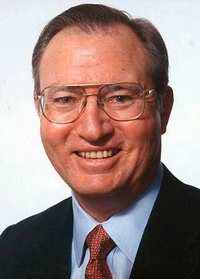ATA Chair Tilton Says There "Clearly Is A Market"
 In a speech to the Commercial Aviation Alternative Fuels
(CAAFI) Annual Meeting Thursday, Air Transport Association Chair
Glen Tilton, who also serves as Chairman, President and CEO of UAL
Corporation and United Airlines, said there is "clearly a market"
for alternative aviation fuels, but that a healthy investment
environment for the capitalization and commercial deployment of
aviation alternative fuels is still lacking, and cash-strapped
airlines are not in a position to make that investment.
In a speech to the Commercial Aviation Alternative Fuels
(CAAFI) Annual Meeting Thursday, Air Transport Association Chair
Glen Tilton, who also serves as Chairman, President and CEO of UAL
Corporation and United Airlines, said there is "clearly a market"
for alternative aviation fuels, but that a healthy investment
environment for the capitalization and commercial deployment of
aviation alternative fuels is still lacking, and cash-strapped
airlines are not in a position to make that investment.
The airlines need alternative fuels for three good reasons,
Tilton said. An alternative would provide competition to
petroleum-based fuels to help limit price volatility, increase
security of supply, and reduce environmental impact.
"Fuel is by far our largest expense," Tilton said. "The
volatility that we have seen in the oil market driven by
uncertainty and speculation -- makes this expense one that is
virtually unpredictable. And, that unpredictability will exist as
long as there continues to be the possibility of unconstrained
speculation."
 Tilton (pictured, right) said the industry used about
the same amount of fuel in 2008 as in 2003, but the collective bill
was some $42 billion higher. "It is impossible to offset a
$16 billion increase, let alone a $42 billion increase, with
nonfuel cost reductions or new revenues. Volatile increases in fuel
costs devastate the industry’s bottom line," he said.
Tilton (pictured, right) said the industry used about
the same amount of fuel in 2008 as in 2003, but the collective bill
was some $42 billion higher. "It is impossible to offset a
$16 billion increase, let alone a $42 billion increase, with
nonfuel cost reductions or new revenues. Volatile increases in fuel
costs devastate the industry’s bottom line," he said.
But equally important are the other two factors, he said. "We
know very well the significant issues caused by our reliance on oil
from unstable regions of the world. With fuel supply lines in the
U.S. located in gulf and coastal regions, we also contend with the
impact of weather related supply disruptions. Alternative fuels
would help bring needed diversity of physical supply."
"While aviation only accounts for 2 percent of U.S. or 3 percent
of global manmade greenhouse gas emissions, we are committed to
reducing the impact associated with aviation. Aviation alternative
fuels are a critical part of this commitment – they must
produce an environmental benefit on a lifecycle basis relative to
traditional fuels." he added.
Tilton pointed out that airlines are not the only potential
buyers of alternative fuels. The military uses large quantities of
jet fuel, and would be a major consumer of alternatives as
well.
But the principal factors standing in the way of viable
alternative fuels, in Tilton's view are lack of funding for
potential producers, the fragile financial state of the airlines,
and a government focus on punishment in environmental matters
rather than assisting in developing the alternatives.

"The airline industry is organized, committed and unified as
buyers of alternative fuels. We consume between 18 and 20 billion
gallons of jet fuel annually, creating a great market opportunity
for these products," Tilton said. But "We need leadership from
government to make the needed investment attractive to those who
can and will invest. We need alternative fuels, want alternative
fuels, and we’ve flown aircraft with them. There is a
significant market for such products. The country has a great
opportunity and together we can meet this challenge – or we
can continue to flounder around. Not what I would call a tough
decision."
 ANN's Daily Aero-Term (05.29.25): Terminal Radar Service Area
ANN's Daily Aero-Term (05.29.25): Terminal Radar Service Area ANN's Daily Aero-Term (05.30.25): Very High Frequency (VHF)
ANN's Daily Aero-Term (05.30.25): Very High Frequency (VHF) Aero-News: Quote of the Day (05.30.25)
Aero-News: Quote of the Day (05.30.25) Airborne 05.23.25: Global 8000, Qatar B747 Accepted, Aviation Merit Badge
Airborne 05.23.25: Global 8000, Qatar B747 Accepted, Aviation Merit Badge ANN's Daily Aero-Linx (05.30.25)
ANN's Daily Aero-Linx (05.30.25)





